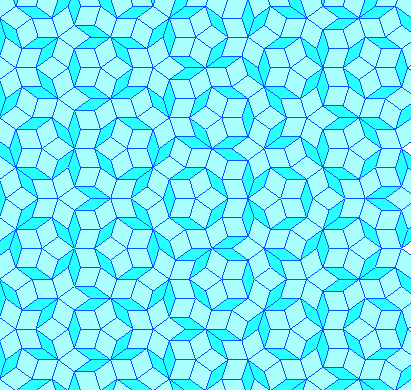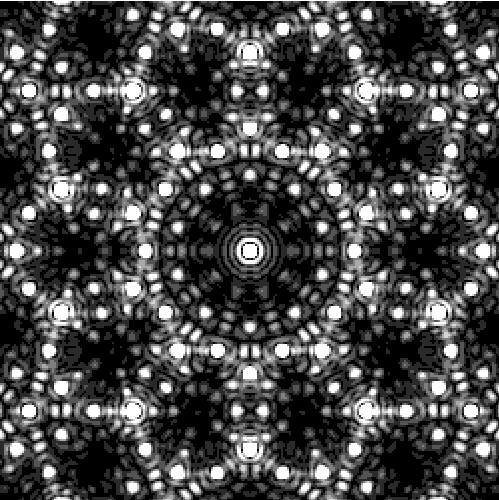Fourier Transformof arbitrary point sets © Steffen Weber 1996 |
(last modified April,15,1996)
This is a simple demonstration of the Fourier transform (diffraction pattern) of a point set. This program produces black/white or color PostScript output. The source code is provided with the package. This DEMO program is similar to the one that Marjorie Senechal shows in her book Quasicrystals and Geometry. It is possible to give scale factors for the intensity and for the input data to produce different graphics output. You may also choose between kinematical or dynamical intensity distribution. For input you only need an input file with the x- and y-coordinates of a point set.
Check also my Java applets JFourier1, JFourier2 and JFourier3.

Part of the vertices of this rhombic Penrose tiling are taken as point set. (point scatterers)

This picture was actually created by Fourier2.exe, which is identical to Fourier.exe only that it produces 250x250 pixel graphics output instead of 100x100. In this case the 250x250 graphics is encoded to keep the PS-file small. So it is not possible to edit the intensity in the PS-file itself, which is possible for the PS-files from Fourier.exe.
1. PostScript Example
2. PostScript Example
3. PostScript Example
4. PostScript Example
These examples are from FT1.EXE available on FTP now. In the next version (FT2.EXE) it is possible to input x,y -coordinates for point scatterers as before, or x, y, z, atomic number, temperature factor if you want to calculate the 0.layer of the diffraction pattern for a crystal structure. In that case the scattering formfactors will be calculated from the scattering factor constants as given in the International Tables of Crystallography. I plan to extend the crystallographic features of this program much more in future.